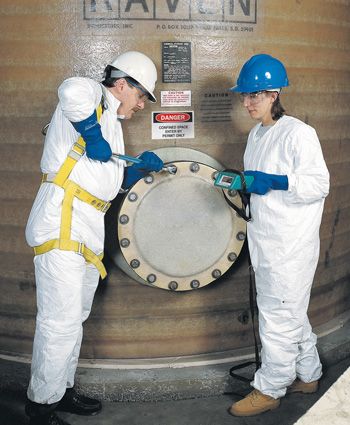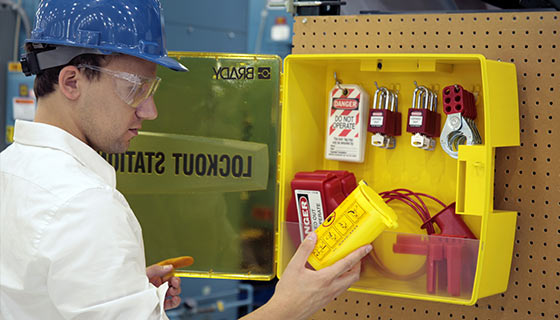Labels for Safety, Visuals and Facility ID Desktop Printers
Labels for Product, Wire and Lab ID Benchtop Printers
Labels for Safety, Visuals and Facility ID Desktop Printers
Labels for Product, Wire and Lab ID Benchtop Printers
Safety and Facility ID Desktop Printers
Product, Wire and Lab ID Benchtop Printers
Barcode Scanner and Printer Kits
Barcode Scanner and Printer Kits
PaintStripe Floor Marking Stencils
Valve Lockouts & Hose Lockouts
Group Lock Boxes & Permit Control
Brady Safety Lockout Tagout Services
Pipe Marker Accessories & Mounting Brackets
Maintenance and Production Tags
Calculators and Assessment Tools
Product Finders and Data Sheets
There’s lots of talk these days about going green. But what, exactly, does that mean when it comes to jobs?
Green occupations are those that directly work to improve the environment, typically in roles that generate or improve the use of clean energy or waste recycling or elimination. But just because these jobs are green doesn’t mean they’re safe. While these jobs provide both an important service in delivering economic opportunities as well as supporting environmental initiatives, that does not remove the potential hazards and dangers that are associated with green construction and other green energy-related fields.
With new and refined green energy solutions come new types of hazards and exposures. While many hazards are still unknown when it comes to these evolving solutions, prediction and prevention through design (PTD) are essential to safety in both construction and design phases of new products.
So, how do you keep your team safe in these unique fields? It starts with recognizing both common and unique hazards present in green energy occupations, as well as potential solutions that employers should be aware of and implement with PTD and health and safety regulations.

There are two main forms of biofuels in use today: ethanol and biodiesel. The fermentation process that is required to produce ethanol can also create other hazardous materials that include acids, bases and gasoline. Ethanol is a highly flammable liquid that is easily ignited under normal temperatures and conditions.
Biodiesel is produced when organic materials react with alcohol and requires additional materials as catalysts that may be highly caustic and combustible.
Both of these processes require careful management to protect workers from hazardous and dangerous materials. Additional hazards associated with biofuel work include hazardous chemical reactions, toxicity hazards, fire and explosion hazards and burn hazards from explosions and chemical exposure.
Geothermal energy relies on heat from the earth’s interior to create power. Many of the hazards posed to geothermal workers are similar to hazards in construction and related industries. Geothermal hazards may include dangerous solutions and chemicals, such as glycol or hydrogen sulfide, used in the process of harvesting energy from geothermal sites.
Along with chemical dangers, there are also dangers associated with construction and equipment to drill and excavate for geothermal heat. Employees entering trenches or other wellheads that are not properly sloped or contained are also at risk.
Green roofs are vegetative installations planted over waterproofing systems on the top of a flat or slightly sloped building. Green roofs are growing in popularity, and the market is forecasted to grow 17% between 2020 and 2027. The workers that install green roofs often work alongside large-scale industrial equipment that includes cranes, derricks and hoists. This machinery poses threats without proper training or personal protective equipment (PPE). Green roof workers also often work in areas where they are exposed and vulnerable to electrical equipment and power lines.
Green roof hazards can include silica dust exposure which may take place during the cutting, grinding and drilling of products necessary to the hardscaping of rooftops. Breathing in fine particles of crystalline silica dust may cause silicosis, which is highly debilitating and may even lead to death.
Hydrogen fuel cells utilize the chemical energy of hydrogen to create electricity. They do not require any recharging, but can produce heat and electricity as long as a fuel source is supplied. The hazards of hydrogen fuel cells include common workplace occupational hazards as well as exposure to fire and explosion, freeze burns, arc flashes and electrocution.
The process of recycling materials is essential to green initiatives. This may include recycling materials for reuse and hazardous waste management to keep dangerous waste out of landfills and, subsequently, water sources.
Many of the hazards that recycling workers face are similar to those found in the construction industry. This includes hazardous materials, traffic safety, proximity to industrial machinery and moving machine parts and slips, trips and falls.

Solar energy is created through a process that harnesses sunlight for electricity and heat. Workers in the solar industry face hazards in all stages of manufacturing, installation and maintenance.
Solar workers are often exposed to arc flashes, electrical shock, falls and thermal burns. Working conditions can expose them to extreme heat and cold stress from weather, which may produce dehydration, heat exhaustion, heatstroke and even death. The industrial equipment used by solar workers such as cranes and hoists may also cause injury or death if not properly inspected and maintained or operated without precautions in place for nearby workers.
The weatherization industry uses materials and crews to inspect households and buildings, to ensure safety and air quality in those buildings and to reduce utility usage.
Weatherization includes mechanical and maintenance duties for heating, cooling and piping systems, as well as the application of various types of insulation and sealing products. These products often contain fiberglass, cellulose, spray polyurethane foam, spray polystyrene and spray latex sealant. Materials like these can cause bodily irritation and respiratory issues and have flammable and combustion potentials that require safe handling, training and PPE.
Those who work with and install weatherization materials are often exposed to hazardous workplaces where they may come into contact with electricity. They may be confined in small spaces with a lack of proper ventilation or respiratory equipment. And, they may be exposed to fires and falls.
Wind energy is quickly growing in popularity across the globe. With the many advantages that wind energy offers, there are also common and unique workplace hazards for wind energy workers that require safety measures and protection.
These workplace hazards may cause small to serious injuries, and some may result in fatalities. Common hazards to wind energy workers include:
To create safer green energy employment and occupations, employers need to understand the potential hazards and risks involved in all aspects of manufacturing, installation, maintenance and construction. As those hazards may still be present on the job site, employers should consider the following when creating safer work environments:

The renewable energy market has experienced significant growth and is projected to reach a value of $1.5 trillion by 2025. Employers in the field need to stay up to date on safety precautions, training and hazard elimination methods to ensure safety alongside economic growth. Safety education not only impacts a company’s bottom line but also creates stable employment opportunities that attract valuable and necessary workers.